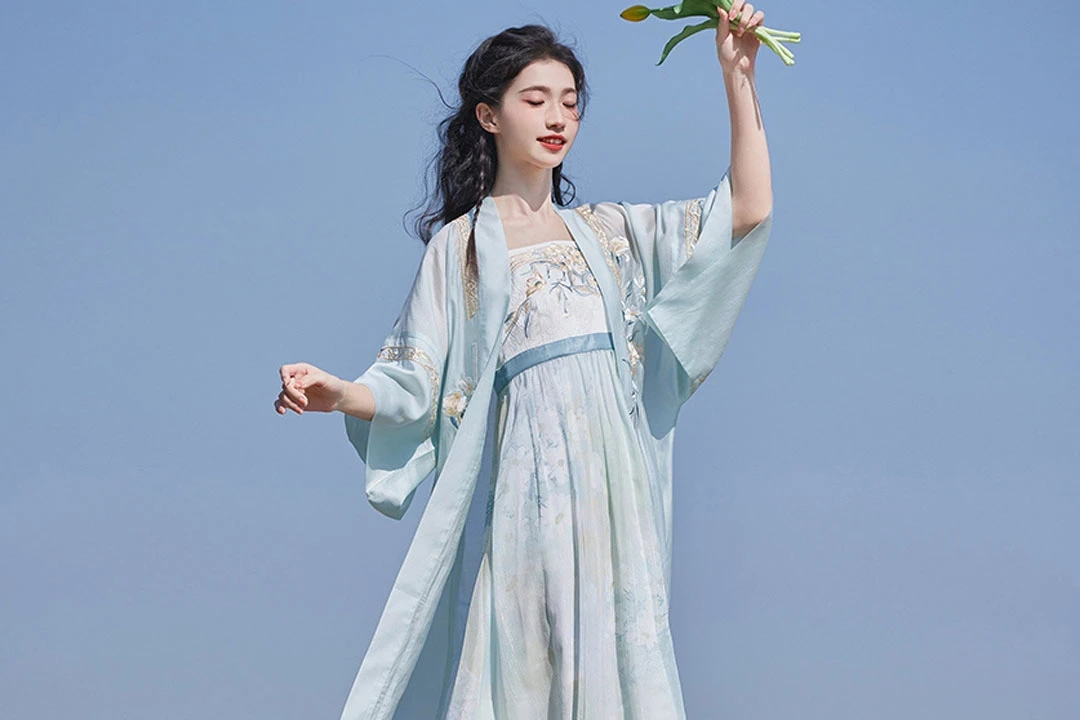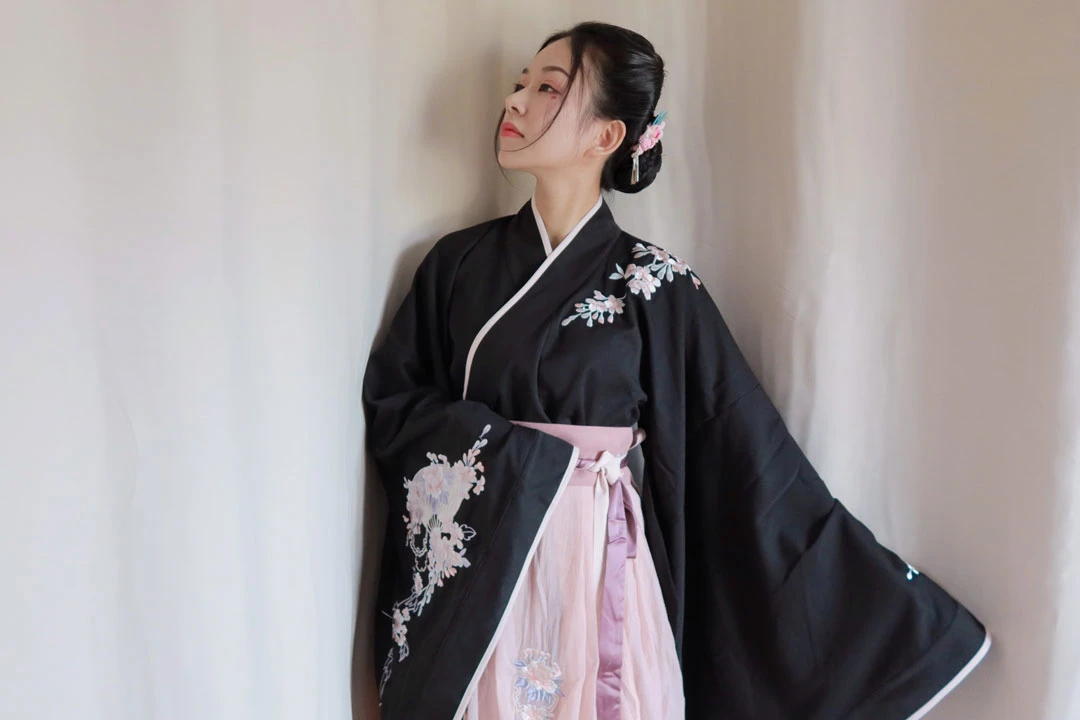In the rich tapestry of traditional Chinese clothing, the “Hanfu Songku Pants” have emerged as a fascinating element, reminiscent of modern wide-leg trousers. Delving into the intricate world of Song Dynasty hanfu, one cannot ignore the allure of Song Pants, a distinctive garment that captivated women of that era. While many may have encountered Song Pants in their exploration of traditional Chinese clothing, a lingering question often persists: “What exactly are Songku Pants?” Let’s unravel this sartorial mystery together.
A Glimpse into Songku Pants
As the name suggests, Songku belonged to the repertoire of clothing during the Song Dynasty, particularly favored by women of the time. In the historical context of the Central Plains region, the predominant Han ethnic group exhibited a penchant for upper garments paired with lower garments, symbolizing elegance and tradition. However, the Song Dynasty witnessed a shift in aesthetic preferences, with a departure from the opulence of the Tang Dynasty towards a leaner, more understated style.
Enter the Song Pants – a style that gained popularity akin to its counterpart, the lower skirt. Women of the Song Dynasty adorned themselves with an ensemble featuring an upper garment, often a strapless bodice, paired with the distinctive Song trousers. The outer layer was complemented by a single or multiple overlapping skirts, creating an ensemble that exuded a refreshing, ethereal, and carefree aura. The unique charm of Song Pants can be attributed to its dual-layer design, consisting of an inner bifurcated garment and an outer, crotch-closed layer. This innovative arrangement allowed for a graceful, billowing effect when in motion, reminiscent of fluttering fabric in the wind.
Historical Origins, Bifurcated Trouser Design
The fascination with bifurcated pants, particularly those with an open crotch, traces back to ancient times. In the frigid environments of the Northwest and Northeast, nomadic tribes prioritized warmth and convenience, leading to the early adoption of pants with a crotch opening, especially useful for horseback riding.
However, the inhabitants of the Central Plains, where the climate was more temperate, did not share the same need for warmth. Consequently, the Han people residing in this region did not have a tradition of wearing pants with crotch openings. This historical context explains why the pants of that era typically featured an open crotch design. Nevertheless, the innovative Song Pants came with a twist – an outer layer, creating a harmonious blend of practicality and style.
Evolution into Contemporary Fashion
While ancient wearers embraced the open-crotch style, modern sensibilities have evolved, and the traditional hanfu pants have undergone modifications to suit present-day preferences. The contemporary version of Song Pants retains the two-layer structure but ensures the inner bifurcated pants are securely attached, addressing concerns related to modesty and comfort in everyday wear.
Authentic Hanfu often features pants with two separate leg openings and lacks a crotch area. This historical adherence to bifurcated pants without a crotch aligns with the fashion norms of ancient times, a departure from the later adoption of undergarments that gained popularity in the mid-20th century, influenced by Western fashion trends.
In the contemporary context, men wearing Hanfu have the option of donning specifically designed pants. However, if the hem of the robe is sufficiently long, individuals may choose to pair it with their preferred style of pants, ensuring a harmonious ensemble without revealing unintended elements.
Tips for Hanfu Pants’ Colors
The art of color coordination plays a crucial role in enhancing the appeal of traditional Chinese attire. Here’s a brief guide to pairing different colors with Hanfu:
White Elegance
White effortlessly complements any complexion. Pairing white with pale yellow or ivory creates a soft and harmonious combination. Ivory pants paired with a light purple jacket exudes sophistication and individuality.
Blue Versatility
Blue, in its various shades, is versatile and complements most skin tones. Mixing shades of blue and red creates a charming, vibrant contrast. A blue jacket with grey striped trousers showcases a refined and elegant demeanor.
Brown Earthiness
Brown imparts a pure and innocent vibe when paired with white. Maroon or blood-red accents elevate the charm of brown skirts and sweaters. Brown sweaters with grey plaid pants convey a sense of finesse and maturity.
Mysterious Black
Black is universally flattering and can be paired with any color. Black floral print t-shirts with beige A-line skirts radiate casual elegance.
A black outer garment paired with a blood-red skirt exudes confidence and a touch of rebellion.
For those who embrace Hanfu as a form of self-expression, modern interpretations have given rise to innovative and personalized stylings. Whether exploring the vibrant streets on a weekend or attending a formal event, Hanfu enthusiasts can experiment with different combinations, merging traditional elements with a contemporary flair.
As the rich heritage of Hanfu continues to captivate the imagination of fashion enthusiasts, the evolution of Song Pants and the diverse range of Hanfu styles offer a timeless glimpse into China’s sartorial legacy. Each ensemble becomes a canvas, blending history with individuality, creating a visual symphony that resonates across generations. In the modern era, Hanfu remains not just a traditional attire but a living, breathing testament to the enduring elegance of Chinese culture.


